|
 |
 |
|
Hor Lor Durian
|
|
Award winner of the1987 and 1988 Penang Durian Competition. This specie was first cultivated at the Brown Estate of Sungai
Ara, Penang. This durian bears its name from its characteristic appearance resembling the "Hor Lor" melon. Its flesh
is golden yellowish in colour with a smooth texture and is dry and sticky. You will love it if you are durian lover.
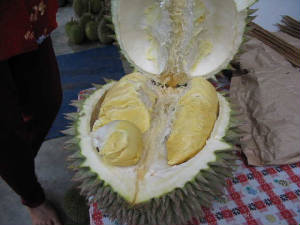
|
| Brand 14 Durian |
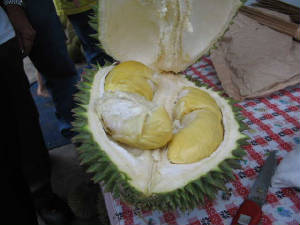
|
| Brand: Green Skin Durian |
|
|
 |
 |
 |
 |
|
Lipan Durian
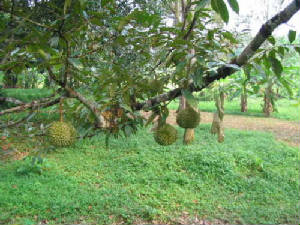
|
| Brand: Lipan Durian Tree |
This specie originates from Brown Estate of Sungai Ara, Penang. This
durian bears its name from the frequent appearance of "Lipan" a Malay word meaning millipede at the foot of its tree. Its
flesh has a pale yellowish colour. Although not attractive in appearance, it is fragrant, firm and has very little fiber.
If you are durian starter, this is the right type for you to start with.
|
|
Green Lemon
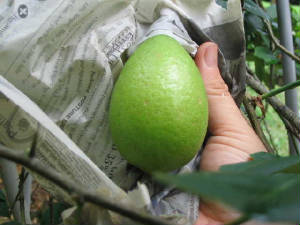
|
| Green Lemon |
The true lemon tree reaches 10 to 20 ft (3-6 m) in height and usually has sharp thorns on the twigs. This green Lemon is
special from the normal orange colour lemon. Try it out.
|
|
Langsat
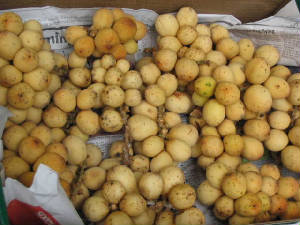
|
| Langsat |
The tree is erect, short-trunked, slender or spreading; reaching 35 to 50 ft (10.5 to 15 m) in height, with red-brown or yellow-brown,
furrowed bark. The fruit, borne 2 to 30 in a cluster, is oval, ovoid-oblong or nearly round, 1 to 2 in (2.5-5 cm) in diameter,
and has light grayish-yellow to pale brownish or pink, velvety skin, leathery, thin or thick, and containing milky latex.
The fresh white in colour and it taste sweet and refreshing.
|
|
Chempedak
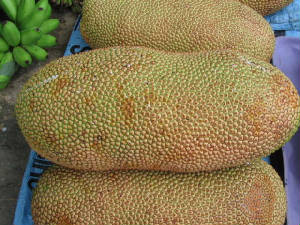
|
| Chempedak |
Chempedak is adapted to humid tropical and near-tropical climates. It is smaller then Nangka. It is sweeter and it has better
smell. When mature, there is usually a change of fruit color from light green to yellow-brown. Spines, closely spaced, yield
to moderate pressure, and there is a dull, hollow sound when the fruit is tapped. The seeds can also be boiled or roasted
and eaten similar to chestnuts.
|
|
Pineapple
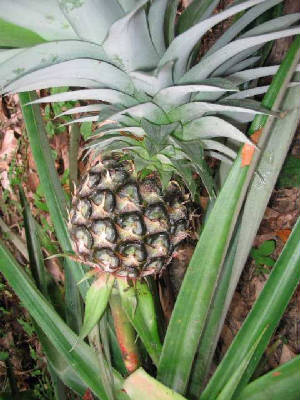
|
| Pineapple |
The pineapples is a tropical or near-tropical plant, but will usually tolerate brief exposures to 28° F. The tough, waxy
rind may be dark green, yellow, orange-yellow or reddish when the fruit is ripe. The flesh ranges from nearly white to yellow.
It is sweet and juicy. This type of pineapple is call 'Balli Pineapple' in Penang.
|
|
Pelam
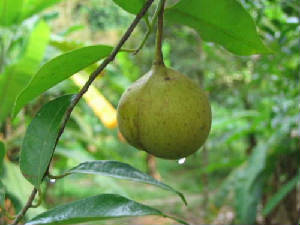
|
| Pelam |
Pelam fruit is one of the famous fruit in Penang. It can taste a bit sour and challenging. It can eat together with a bit
of sugar to remove the sourness. In Penang you can see some of the processed Pelam fruit that sell in tourist spot. People
used to but it as a special gift to friend and relative when they visit Penang.
|
|
 |
 |
|
 |
|
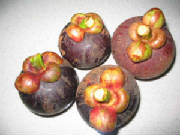
|
| Mangosteen |
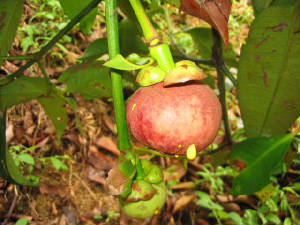
|
| Mangosteen Tree |
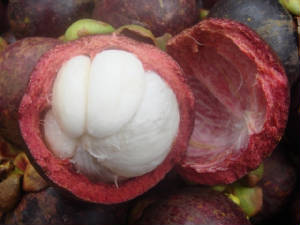
|
|
One of the most praised of tropical fruits. The flesh is slightly acid and mild to distinctly acid in flavor and is acclaimed
as exquisitely luscious and delicious. Mangosteens are usually eaten fresh as dessert. It is very nice to eat and it has
the effect of 'cooling down' body 'heat'.
|
|
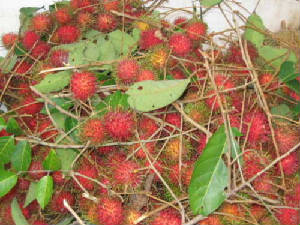
|
| Rambutan |
The rambutan is native to Malaysia and commonly cultivated throughout the archipelago and southeast Asia. In Malaya, the rambutan
generally fruits twice a year, the first, main crop in June and a lesser one in December. Rambutans are most commonly eaten
out-of-hand after merely tearing the rind open. Rambutan is sweet and smooth in it's fresh.
|
|
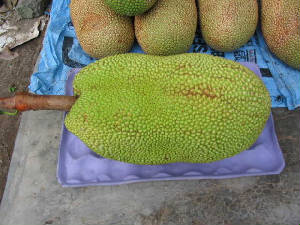
|
| Nangka |
Jackfruit in English. Jackfruit is adapted to humid tropical and near-tropical climates. Jackfruit is the largest tree-borne
fruit in the world, reaching 80 pounds in weight and up to 36 inches long and 20 inches in diameter. The exterior of the compound
fruit is green or yellow when ripe. The interior consists of large edible bulbs of yellow, banana-flavored flesh that encloses
a smooth, oval, light-brown seed. In one, the fruits is yellow and very sweet.
|
|
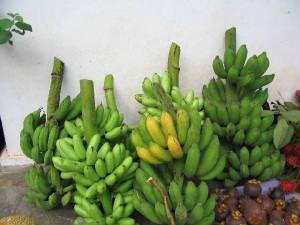
|
| Banana |
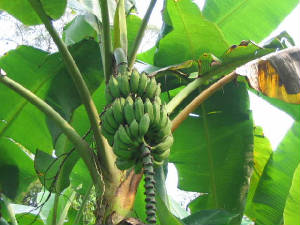
|
| Banana Tree |
The flesh, ivory-white to yellow or salmon-yellow, may be firm, astringent, even gummy with latex when unripe, turning
tender and slippery, or soft and mellow or rather dry and mealy or starchy when ripe. The flavor may be mild and sweet or
subacid with a distinct apple tone. We do have a few type over here : Pisang Emas, Pisang Raja, Pisang Awa
|
|
Papaya

|
| Papaya |
The papaya is a short-lived, fast-growing, woody, large herb to 10 or 12 feet in height. There are two types of papayas, Hawaiian
and Mexican. Hawaiian papaya flesh is bright orange or pinkish, depending on variety, with small black seeds clustered in
the center. Mexican papaya flesh may be yellow, orange or pink. A properly ripened papaya is juicy, sweetish and somewhat
like a cantaloupe in flavor, although musky in some types.
|
|

